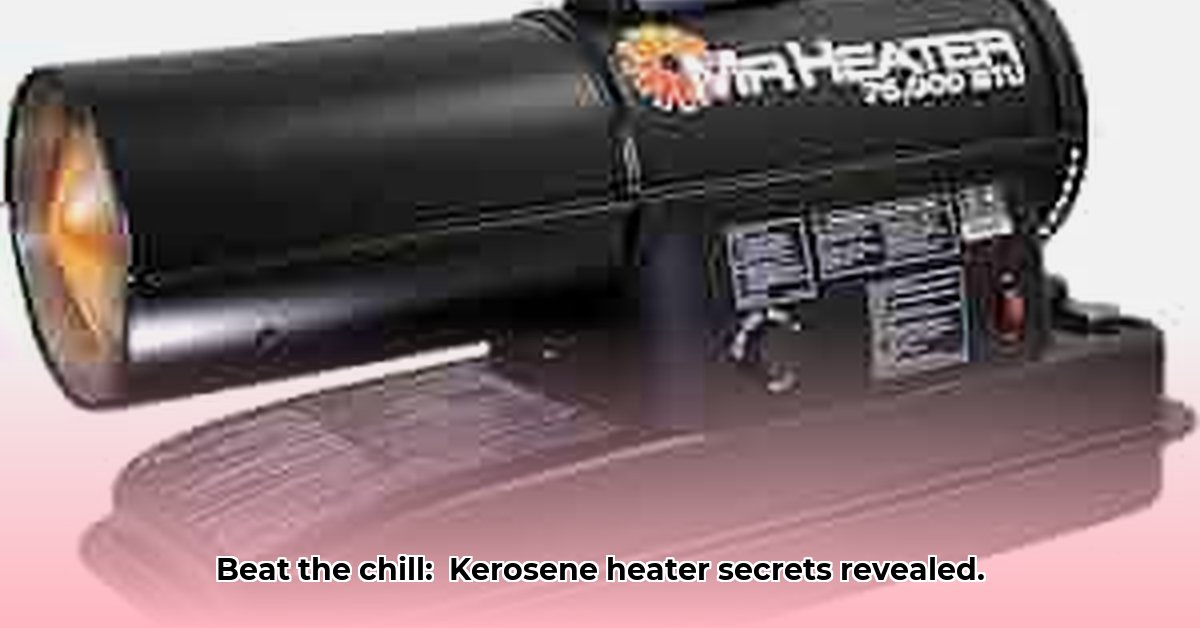
Choosing the Right Kerosene Heater from Tractor Supply
Winter's chill can be challenging, but kerosene heaters offer a reliable heating solution, especially during power outages or in off-grid locations. Tractor Supply provides a range of options, but selecting the ideal heater requires careful consideration. The British Thermal Unit (BTU) rating indicates the heater's heat output; higher BTUs are needed for larger spaces. A small room might only need a low-BTU heater, while a large workshop will require significantly more heat. For propane alternatives, check out propane heater options.
Safety features are paramount. Look for models with automatic shutoffs and tip-over protection to mitigate risks. Fuel tank size is another key factor: a larger tank means fewer refills, but it might be overkill for a smaller heater. Balancing tank size with the heater's BTU output and your heating needs is crucial for efficient use.
Safety First: Responsible Kerosene Heater Operation
Prioritizing safety is crucial when operating a kerosene heater. Never leave it unattended. Ensure adequate ventilation—poor airflow can lead to dangerous carbon monoxide buildup. Keep the heater away from flammable materials like curtains and furniture. Regularly inspect the wick for damage or dirt; a compromised wick reduces efficiency and poses a fire risk. Always allow the heater to cool completely before refueling; refueling a hot heater is exceptionally dangerous.
Kerosene Heaters: Advantages and Disadvantages
Kerosene heaters offer several advantages, but also present some drawbacks. Understanding both sides helps you make an informed decision.
Pros:
- Off-grid heating: Ideal for areas without electricity or during power outages.
- Affordability: The initial cost is often lower compared to other heating options.
- Effective space heating: They can efficiently heat various sized spaces.
- Ease of use and maintenance: Most models are relatively straightforward to operate.
Cons:
- Safety risks: Misuse can cause fires or carbon monoxide poisoning. Careful operation is essential.
- Kerosene handling: Kerosene is flammable and requires safe storage and handling.
- Emissions: While not as high as some fuels, kerosene heaters do produce emissions.
- Maintenance: Regular cleaning and inspections are necessary for safety and efficiency.
Kerosene vs. Propane: A Comparative Analysis
Choosing between kerosene and propane heaters depends on individual needs and circumstances. Both offer off-grid solutions, but they differ significantly. Propane generally burns cleaner, producing fewer emissions. However, it requires tanks that need refills or exchanges. Kerosene is more readily available in certain areas. Consider fuel costs, accessibility, and environmental impact when deciding. "The best choice depends on your location, budget, and priorities," says Dr. Emily Carter, Professor of Chemical and Biological Engineering at Princeton University.
Maintaining Your Kerosene Heater for Optimal Performance
Regular maintenance is vital for a heater's longevity, safety, and efficiency. Clean the wick regularly to remove soot buildup. Inspect the fuel line for any cracks or leaks. Store kerosene properly in a cool, dry place, away from ignition sources. These steps will extend the heater's life and improve safety.
Minimizing the Environmental Impact of Kerosene Use
While kerosene heaters provide warmth, be mindful of their environmental impact. Always use them in well-ventilated areas and clean up any spills immediately. Dispose of used kerosene responsibly according to local regulations. Consider exploring more eco-friendly heating alternatives in the future.
Kerosene vs. Propane: Emissions and Running Costs
Understanding the fuel factor is crucial for making an informed decision. Let's explore how kerosene and propane compare regarding emissions and running costs.
Emissions: A Clean Burn?
Both fuels produce exhaust, but propane generally burns cleaner, resulting in lower emissions. However, both release carbon monoxide (CO), a deadly gas. Adequate ventilation and CO detectors are absolutely essential with both fuel types.
Running Costs: Budget Considerations
Fuel costs vary regionally. Propane might be cheaper per gallon in some areas, but kerosene often offers a higher BTU output, potentially providing more heat per gallon. Purchasing kerosene in bulk might reduce the cost per gallon.
Maintenance and Storage: Practical Considerations
Propane heaters typically require less maintenance than kerosene heaters, which need wick cleaning, fuel draining, and other upkeep. Propane storage is simpler. Kerosene degrades over time and needs a specific storage environment.
Safety Precautions: Prioritizing Safety
Both fuel types present fire and CO poisoning risks. Always follow manufacturer instructions precisely. Smoke and CO detectors are crucial safety measures. Never use these heaters in poorly ventilated spaces.
Choosing Your Fuel: Needs and Preferences
The best fuel choice depends on individual priorities. Propane is often preferred for convenience and low maintenance. Kerosene might be more economical in some instances. Consider supplementary heat needs, portability needs, and fuel availability when making your choice.